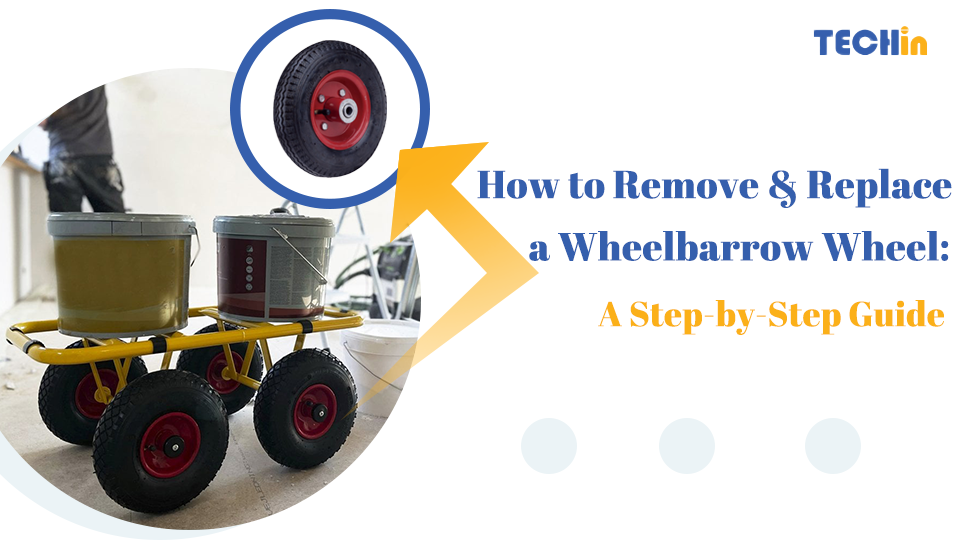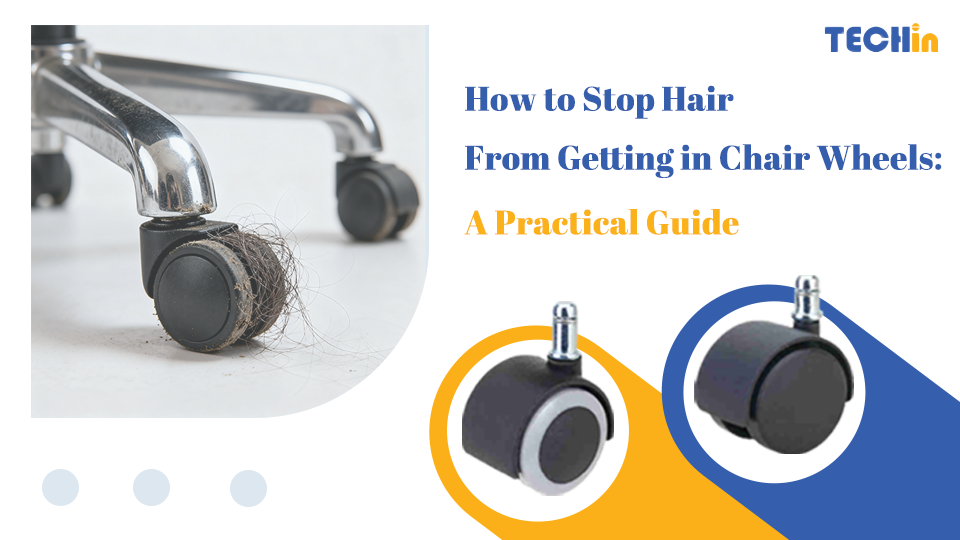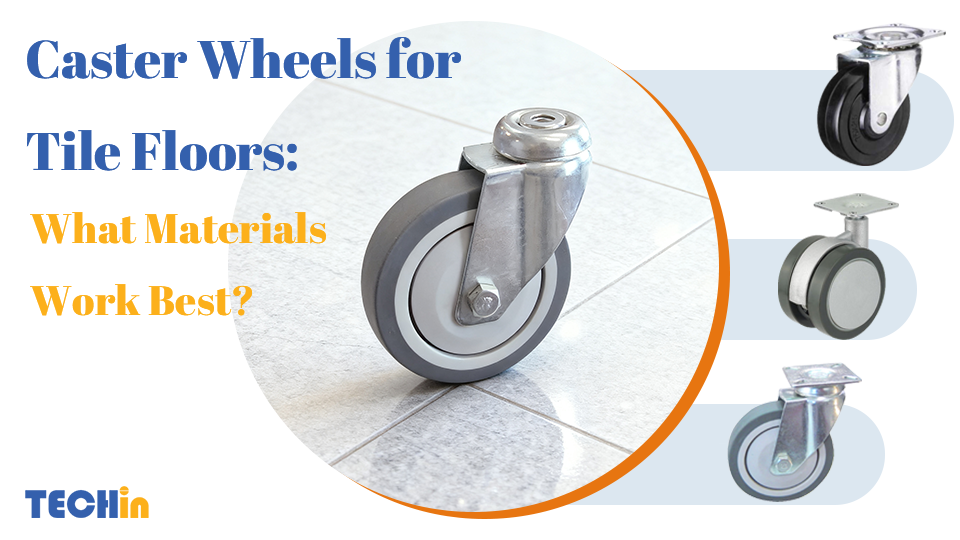In any professional operation, a wheelbarrow’s performance hinges on its wheel. When that wheel wears out or locks up, work slows down. The good news is that replacement is straightforward—if you know the right way to do it. This guide will walk you through the process, ensuring you can handle it with the precision professionals require.
Here’s the process in a nutshell: Secure the barrow, use a wrench to loosen the axle brackets, and slide out the axle to remove the old wheel. After inspecting the bearings, you’ll install the new one, ensuring a perfect fit for the axle and hub. Finally, tighten the nuts, test the rotation, and re-inflate if you’re using a pneumatic tire. The most important takeaway? Always match the wheel type (pneumatic, foam, or solid) to your workload for maximum durability.
Understanding the components is the key to a smooth replacement. Let’s take a closer look at the types, tools, and maintenance steps every professional should be familiar with.
What Is a Wheelbarrow Wheel?
At its core, a wheelbarrow wheel is a simple assembly, but its parts work together to carry heavy loads. It consists of a hub, bearing, axle, and tire.
- The hub is the central frame connecting the wheel to the axle.
- The bearings are what allow for smooth, low-friction rotation.
- The tire provides the necessary traction and cushioning.
In professional environments, these aren’t just wheels; they are critical load-bearing components. The right wheel directly impacts rolling resistance, stability, and worker safety, making it a crucial factor in overall job site efficiency.
Are Wheelbarrow Wheels Universal?
No, wheelbarrow wheels are not one-size-fits-all. While common diameters range from 13 to 16 inches, compatibility comes down to a few critical specifications.
Professional buyers must confirm:
- Axle type: Is it fixed or designed to be removable?
- Hub length: This can vary, typically between 3″ and 8″.
- Bearing diameter: The most common sizes are ½”, ⅝”, or ¾”.
For large-scale procurement or fleet management, standardizing wheel specifications is a highly effective strategy. Always verify if your industrial barrows require universal-fit wheels or need custom-engineered hubs for optimal performance.
What Tools Do You Need to Take the Wheelbarrow Wheels Off?
Having the right tools on hand makes all the difference. It ensures the job is done quickly and without damaging the equipment. Here’s a typical professional toolkit:
| Tool | Function |
|---|---|
| Wrench or socket set | To loosen and tighten axle brackets and nuts |
| Pliers | For gripping and removing cotter pins |
| Hammer or mallet | To gently tap out stuck axles or components |
| Flathead screwdriver | Useful for prying off bearing caps or old tires |
| Lubricant (e.g., WD-40) | An essential for loosening rusted nuts or pins |
| Gloves and safety glasses | For personal protection during the task |
Using the correct tools is fundamental to efficient fleet maintenance and minimizes the risk of damaging the axle assembly.
How to Remove a Wheelbarrow Wheel (Step-by-Step)
Follow this structured approach for a safe and effective replacement.
Step 1: Stabilize the Wheelbarrow
Position the wheelbarrow upside down or on a secure stand. Ensure it’s stable, with the handles resting firmly on the ground to prevent any movement.
Step 2: Loosen the Axle Brackets
Using your wrench, loosen the nuts or bolts securing the axle brackets. If they are rusted, apply a penetrating lubricant and allow it several minutes to soak in.
Step 3: Remove the Axle and Wheel
Carefully slide the axle out, keeping track of any washers or spacers. Pull the wheel off the frame. If it’s tight, a light tap with a hammer or mallet should be enough to free it.
Step 4: Inspect Bearings and Hub
With the wheel removed, inspect the bearings and hub. If any components show signs of significant wear or damage, they should be replaced before installing the new wheel.
Step 5: Fit the New Wheel
Slide the new wheel onto the axle, ensuring it aligns correctly within the frame. Reinstall any spacers and washers in their original order.
Step 6: Tighten and Test
Securely tighten the axle brackets. Spin the wheel to confirm it rotates freely without wobbling. Finally, test by rolling the wheelbarrow to ensure it moves smoothly.
Tip for Fixed Axle Designs:
Some professional-grade wheelbarrows use fixed axles. On these models, you will need to remove the retaining rings or cotter pins at the end of the axle to detach the wheel.
How to Maintain a Wheelbarrow Wheel
Proactive maintenance can significantly extend the service life of your wheels. Here is a simple checklist:
- Inspect regularly – Routinely check for cracks, punctures, or flat spots.
- Lubricate bearings – Apply grease every few months to ensure smooth rotation.
- Maintain tire pressure – For pneumatic models, keep tires inflated to the recommended PSI.
- Clean after heavy use – Remove debris like dirt or cement from the hub and axle.
- Store properly – Protect the wheelbarrow from direct sunlight to prevent UV degradation.
While foam and solid wheels are lower maintenance, they should still be inspected for hub wear and proper alignment.
Summary
While wheel replacement is a routine task, professionals know that precision is key to ensuring long-term durability and safety. By selecting the right type, using the proper tools, and performing regular maintenance, you extend the life of your equipment and maintain operational efficiency. Partnering with a reliable supplier like Techin ensures you get consistent, high-quality solutions that support your business goals.










